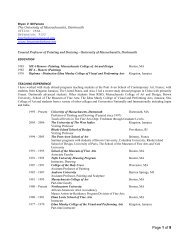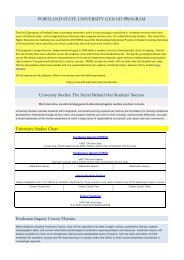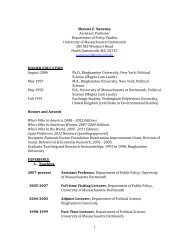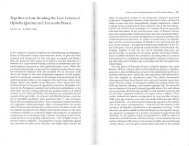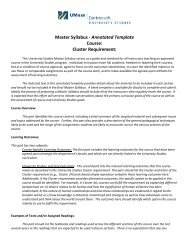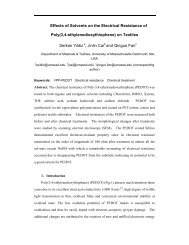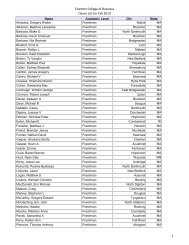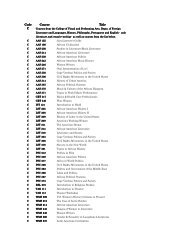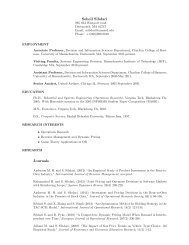A framework for supply chain performance measurement
A framework for supply chain performance measurement
A framework for supply chain performance measurement
Create successful ePaper yourself
Turn your PDF publications into a flip-book with our unique Google optimized e-Paper software.
ARTICLE IN PRESSA. Gunasekaran et al. / Int. J. Production Economics 87 (2004) 333–347 341Table 2Importance of order planning metricsAssessment Metrics PercentageimportanceHighly important Customer query time 19.11ModeratelyimportantProduct developmentcycle time17.37Less important Accuracy of <strong>for</strong>ecasting 16.59Planning process cycle 15.90timeOrder entry methods 15.51Human resourceproductivity15.51organizational success. The only strategic planningmeasure deemed less important was level of energyutilisation which may suggest that it is not ofstrategic significance. That, of course, could varyfrom firm to firm, depending on energy cost as apercent of totalmanufacturing cost and on energyprice levels relative to the prices of other manufacturinginputs.The percentage importance (relative importance)of the strategic per<strong>for</strong>mance metrics clearlysuggests that non-financialmeasures of per<strong>for</strong>manceare considered by practitioners to beimportant in assessing the competitiveness of anorganization. This is not to say that financialmeasures are no longer important, but rather thatnon-financialmeasures are important and necessaryin assessing a firm’s ability to compete.In Table 2, the order of priority <strong>for</strong> the orderplanning level metrics is presented. At the orderplanning level, customer query time was highlyimportant, which would seem to emphasize theimportance of customer service. Product developmentcycle time and <strong>for</strong>ecasting were moderatelyimportant. These two factors relate to meetingcustomer needs and doing so in a timely fashion.Although there is no statistical evidence containedherein to prove such a link, common sensesuggests a link between these and the perceivedcustomer value of the product, rated number oneamong the strategy per<strong>for</strong>mance measures. Theimportance ratings of product development cycletime and <strong>for</strong>ecasting measures suggests that theywarrant monitoring by management and improvementef<strong>for</strong>t. Cross-functionalteams, rapid prototyping,and concurrent engineering involvingsuppliers would seem appropriate in ef<strong>for</strong>ts toimprove product development cycle time. Manyalternative techniques are available <strong>for</strong> <strong>for</strong>ecasting.If <strong>for</strong>ecasting accuracy is a concern, firms mightexamine the techniques employed with an eyetoward improvement. Because the <strong>for</strong>ecasts of all<strong>supply</strong> <strong>chain</strong> links can influence <strong>supply</strong> <strong>chain</strong>per<strong>for</strong>mance, a concerted ef<strong>for</strong>t by all should bemade to assure accurate <strong>for</strong>ecasts. This is emphasizedby a survey participant (a machine toolmanufacturer) who said that <strong>supply</strong> <strong>chain</strong> partnersshould ‘‘Use better <strong>for</strong>ecasting techniques to removeuncertainties in <strong>supply</strong> <strong>chain</strong>.’’ Many understandthe consequences of weak <strong>for</strong>ecastingper<strong>for</strong>mance and recognize the need to measureand improve it.By benchmarking their <strong>for</strong>ecasting methodswith those of the best, a better understanding thetechniques might be gained and greater accuracyachieved. Also, by integrating production scheduleswith others in the <strong>supply</strong> <strong>chain</strong>, moreaccurate day to day demand <strong>for</strong>ecast might bepossible <strong>for</strong> all links in the <strong>supply</strong> <strong>chain</strong>. Planningprocess cycle time, order entry methods, andhuman resource productivity were the less importantorder planning measures. Planning processcycle time and order entry methods could beimproved through reengineering ef<strong>for</strong>ts that includemultiple links in the <strong>supply</strong> <strong>chain</strong>, becausethe actions of multiple participants interact toinfluence per<strong>for</strong>mance in these areas. Improvementsin customer query time, product developmentcycle time and planning process cycle timemight be brought about by greater humanresource productivity, so although it was ratedlast in importance, human resource productivityshould not be dismissed as unimportant. Improvementin order entry methods, customer query time,<strong>for</strong>ecasting accuracy and customer query timemight be brought about through the application ofin<strong>for</strong>mation technology to increase accuracy andexpedite the flow of in<strong>for</strong>mation throughout the<strong>supply</strong> <strong>chain</strong>. Process cycle time can be tackled byusing techniques like single minute exchange of dieand group technology, whereby similar facilities



